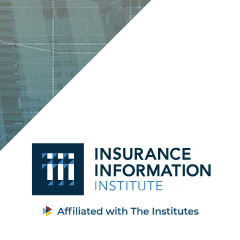
Last week’s Lightning Round III: Products and Services for Disaster and Risk Mitigation featured presentations by four teams of entrepreneurs who have developed products to boost societal resilience and mitigate natural disaster risks. This was the third time this year that Triple-I and its Resilience Accelerator, ResilientH20 Partners and The Cannon, have connected entrepreneurs with leading insurance innovation specialists and investors.
The first two presentations were by prize-winning teams from 2020’s Hack-for-Resilience competition, which was hosted by Wharton Risk Center and Triple-I’s Resilience Accelerator. The teams presented:
- Air.ly: An app that identifies locales near wildfire zones where individuals afflicted with respiratory issues, or other health complications, can find fresh-air recreation opportunities. It won the prize this year for the Best Overall Hack-for-Resilience.
- Insura: An app that uses a home’s location and historical loss data to recommend mitigation and maintenance activities that could reduce a homeowner’s insurance premiums. It won this year’s prize for the Best Application of Insurtech.
Ami Nachiappan, a Junior at New York University, presented on behalf of the four-member Air.ly team.

“For many with sensitive respiratory systems, the wildfires’ smoke has created difficulty breathing and dizziness,” she said, pointing out that this can be the case hundreds of miles from fire locations and long after the blazes have been extinguished.
Air.ly provides “a comprehensive visualization of real-time air-quality data across the U.S.,” as well as well as recommending locations for safe outdoor recreation activities. Existing weather apps that display air-quality information lack “call to action options and cautionary warnings,” and recreation apps like Yelp lack real-time weather and air-quality information.
This fragmentation, Nachiappan said, is what sets Air.ly apart.
Savan Patel, a sophomore at the University of Pennsylvania, spoke for the four-member Insura team. Insura is a third-party “gamification platform” for home improvement products modeled after applications that seek to reduce automobile accidents and claims by influencing driver behavior.

In addition to the hack-a-thon winners, two established businesses – members of the Resilience Innovation Hub “portfolio of disaster risk-mitigation innovation” presented their products:
- Thermal Gate™ 2.5: An artificial intelligence-based system that screens and detects individuals who have an elevated body temperature before they enter venues that are open to the public.
- Mesh++ : A just-in-time WiFi community network that requires no external power or wiring to generate broadband access for first-responders, citizens, and preparedness interests.
All four presentations can be viewed below:
















